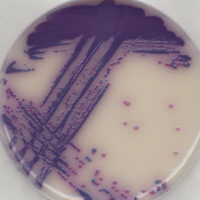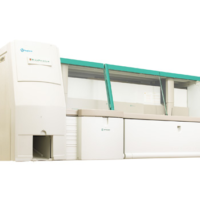Helping You Release Product Sooner: Salmonella Rapid Culture Method

Salmonella is a Gram-negative, rod-shaped, motile bacterium with a widespread occurrence in animals. Environmental sources of the organism include raw meat, raw poultry and raw seafood. Detection is critical as Salmonella is the most frequently reported cause of foodborne illness (40,000–50,000 cases reported annually) and the infectious dose can be as low as 1–10 cells.
Current Methods
Current testing methods (FDA/BAM) involve a pre-enrichment step followed by a second selective enrichment step, followed by plating (which can include secondary plating). This process takes 72–96 hours (3–4 days), depending on the food sample being analyzed, and must be followed by biochemical/serological confirmation of Salmonella contamination, increasing the time to results to up to 5 days.
As indicated above, two enrichment steps are typically needed to recover Salmonella since the bacteria are usually present in very low numbers and may be stressed or damaged from food processing methods. These enrichment methods are general enrichments and are designed to cultivate any microorganisms that may be present in the food sample, potentially masking the presence of very low numbers of true pathogens. In addition, the secondary enrichment media, modified Rappaport-Vassiliadis broth, must be prepared from its individual raw materials to ensure sufficient recovery of any contaminating microorganisms.
Rapid Confirmation
To address the need for a rapid, accurate test for confirmation of Salmonella contamination in food products, a new method, the Salmonella Rapid Culture Method, was developed. This method involves a single enrichment in ONE Broth Salmonella, followed by plating on Brilliance™ Salmonella (a novel chromogenic culture medium), taking a total of 2 days (or less) to generate an initial result. We are currently seeking AOAC-RI validation of this method.
This highly nutritious enrichment broth contains a specific growth promoter to optimize recovery of stressed and damaged Salmonella cells, while inhibiting the growth of competing microorganisms. It allows enrichment to be performed in a single 18–24 hour incubation, eliminating the need for a secondary enrichment.
Following enrichment, the sample is plated and chromogens within the medium enable differentiation of Salmonella colonies (bright purple) from any remaining organisms that are able to grow, such as Klebsiella (blue colonies) and Enterobacter (clear colonies to no growth), thus reducing the number of false-positives requiring confirmation.
Testing Results
Fresh Salmonella cultures were prepared from frozen stocks using standard enrichment media [tryptic soy broth (TSB), brain heart infusion (BHI) or ONE Broth Salmonella] and incubated for 18–24 hours at the appropriate temperatures, according to the manufacturers’ instructions.
Food samples were inoculated with low (~1 CFU/25 g) or high (~1.1 CFU/g) microorganism amounts. The final inoculated concentrations were confirmed by most probable number (MPN). Side-by-side samples (both inoculated with microorganisms and uninoculated negative controls) were compared using each method.
A total of 100 Salmonella serovars/strains of Salmonella spp. was obtained and tested as indicated above. All of these strains produced a positive purple-colored colony. In addition, a total of 30 species not belonging to the genus Salmonella was analyzed in the same manner. All these strains showed atypical (non-purple colonies) or no growth.
This study demonstrated that the Salmonella Rapid Culture method detected all serovars of Salmonella when spiked at levels from low (1 CFU/25 g) to high (1.1 CFU/g) in food sources in which Salmonella contamination was observed. All 100 serovars tested produced the "typical" purple colonies, indicative of Salmonella species. By screening such large numbers of serovars, food companies can feel secure knowing that food is free from Salmonella contamination when tested using this methodology.
In addition, this study demonstrated that the method discriminates between Salmonella species and other selected non-Salmonella organisms, which showed no growth or atypical growth, demonstrating the selectivity of the method. Such selectivity ensures that samples contaminated with non-Salmonella organisms do not demonstrate a false-positive color development, allowing the proper identification of food pathogens present in the food tested. This will ensure a safe food supply free of Salmonella while preventing the waste from discarding any false-positive food lots.
In summary, this sensitive, robust method clearly and rapidly identifies Salmonella microorganism contamination in food samples in two days or less, and in addition, discriminates Salmonella spp. from non-Salmonella organisms based on clearly visible, easy-to-read colony colors. This robust method makes rapid identification in food products quicker and easier, reducing time to market and eliminating the risk of food recalls, saving valuable time and money.
www.remel.com
Looking for a reprint of this article?
From high-res PDFs to custom plaques, order your copy today!







